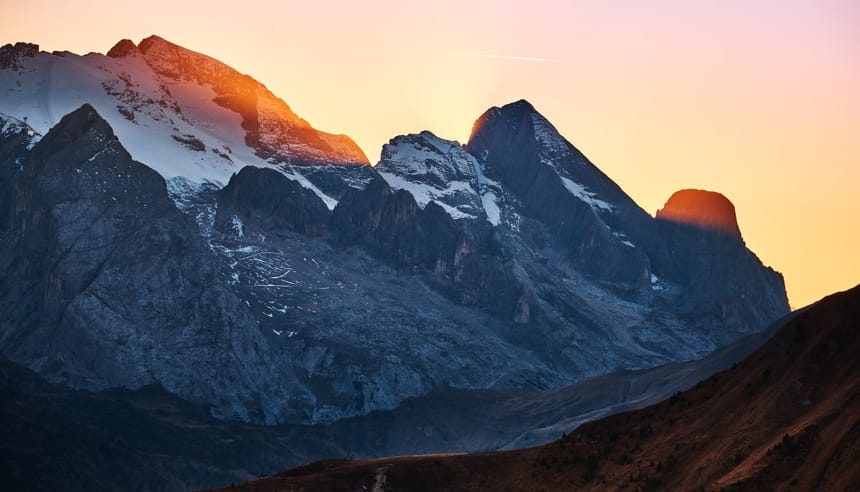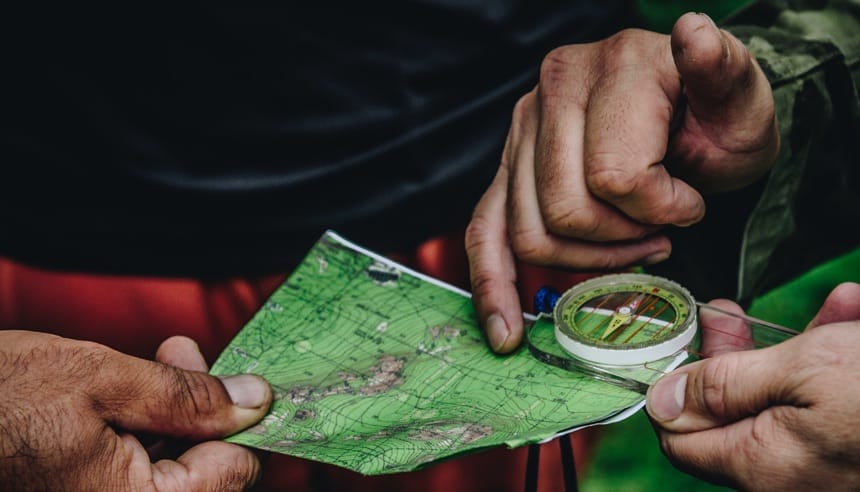Enrosadira...
...the legend that colours the Dolomites
The phenomenon of Enrosadira
When the sunlight colours the rocks of the Dolomites giving a tone of pink we can witness the natural spectacle of Enrosadira, which mixes chemistry with legend.
At sunrise and sundown, the sunrays touch the rocky surfaces of the Dolomite mountains and their minerals.
Geologically, the Dolomite mountains consist for the 90% double calcium magnesium carbonate – called “dolomite”, - and for the remaining 10% calcium carbonate. A unique natural phenomenon can occur, visible with the naked eye as it transforms the Dolomites, colouring them with nuances ranging from pink to red, orange and purple.
It occurs everyday and all year around, but it is an unpredictable phenomenon since it is dependent on atmospheric conditions and the position of the sun. The more the sky is clear, the more striking are the colours.
The legend of Enrosadira and King Laurin
Etymologically, the word “Enrosadira” comes from the local Ladin language (rosadüra o enrosadöra), which literally means “turning pink”. The Enrosadira is also tightly connected to the Ladin culture, as evidenced by the different legends developed around the natural phenomenon.
The most famous tale is about the origin of the Enrosadira: the result of a revenge against the mountains thrown by King Laurin, lord of the dwarf who reigned over the Catinaccio range. There are several different versions of this legend that vary from valley to valley. One of these tells one day the King of Latemar sneaked into King Laurin’s rose garden, where he felt in love at first sight with the King’s daughter, Princess Ladina. Blinded by so much beauty, the King of Latemar decided to kidnap her. When King Laurin discovered the kidnapping, he placed a course on his rose garden – the betrayer mountains – guilty to have revealed the location of his kingdom to the enemy.
Just as the roses would no longer be able to bloom, it would no longer be possible to admire the mountains, neither by day nor by night. He forgot, however, to mention sunrise and sunset, during which it is still possible to admire the blooming rose garden of King Laurin.
Where to see the Enrosadira in the Dolomites
Admiring the Enrosadira in Alta Badia is quite easy after all: just turn your gaze towards the mountains, either at first sunlight or at dusk. If you want to enjoy the most this spectacle, we recommend the long summer evenings or the autumn period when the warm hues of the dolomite rock are framed by the enveloping golden colours of the larches during foliage.
When climbing a mountain peak, the excitement of the moment is amplified by the satisfaction of the ascent. There are many peaks that can be reached in a short time and without any specific technical difficulties.
About 8 km from the campsite there is the Tre Sassi Museum, the most important Great War Museum in the Dolomites. It is the starting point for a 40-minute walk to the summit of Sass de Stria or, for the more adventurous, you can approach the peak via a via ferrata of moderate difficulty. From here you can enjoy a panoramic view of Badia Valley, ranging from the Conturines group to the Sella group. Moving our gaze we admire the Marmolada with its grandeur, the Civetta and the Ampezzo Dolomites as far as Lagazuoi. What better place to admire the Enrosadira?
In the distance you can also see Sass de Pütia, one of the most beautiful peaks from which to admire the Enrosadira in the early morning light. For those who do not feel up to tackling this trek, there are several scenic viewpoints in the proximity of Passo delle Erbe, such as Monte Costaces or Monte Muro. Locations that are easy to reach but can at the same time provide an unforgettable experience in all seasons.







